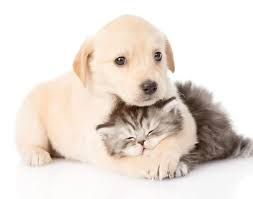Intervention: Saving Your Pet's Life
Animal Doc AM Multi-Media-Dr. Don DeForge
24July2012
In 2009, a human study showed that the top two death problems that were preventable by INTERVENTION are smoking and high blood pressure. Both have effective interventions
yet they are responsible for the highest numbers of deaths in the United States each year.
What about our companions. Do they develop Hypertension--i.e. high blood pressure? The answer is YES! Hypertension can be just as dangerous to pets as it is to humans.
At your next wellness exam or routine veterinary visit have your veterinarian check your pet's blood pressure. An isolated high blood pressure reading is not a diagnosis of hypertension.
Many pets go through "white coat syndrome" the same as people and have very elevated blood pressure because of anxiety or stress in the doctor's office. If your veterinarian gets a high reading it must be repeated a number of times to see if the reading is consistent. If consistently high, other tests are run and a consult with an animal internist or cardiologist is recommended.
There are two numbers that make up the blood pressure reading. The SYSTOLIC, or first number, is the larger of the two and measures the force of blood from the heart to the arteries.
The DIASTOLIC or smaller number measures the force as the heart relaxes as blood flows back to the heart. In animals most Internal Medicine doctors and cardiologists feel that diastolic pressure is not as reliable as systolic, therefore veterinarians mainly measure systolic pressures. Your veterinarian may recommend that your purchase a Doppler non-invasive Blood Pressure Unit to allow you to measure your pet's blood pressure at home on a daily basis and then report the readings to the doctor for analysis.
Hypertension can effect the heart, kidneys, eyes, and the central nervous system. There is primary hypertension which is the disease itself and then there is secondary hypertension which means that some other condition is contributing to high blood pressure.
Here are some of the signs and problems that can occur with high blood pressure in your pet:
- Disorientation
- Dilated Pupils
- Rolling of the eyeballs that is involuntary
- Stroke and Cerebral Vascular Accidents
- Retinal Detachment
- Blindness
- Seizures
- Motor weakness of the legs
Discuss with your veterinarian the normal or abnormal blood pressure readings in the dog and the cat you love. As stated, these readings can vary with age, breed, obesity, excitement, and medical problems present.
Hypertension can occur in older cats. It is many times coupled with kidney disease or hyperthyroidism.
There are many drugs available to the general practitioner, internal medicine doctor, or the veterinary cardiologist to treat hypertension in animals. Beta Blockers and Calcium Channel Blockers are just two categories of many that are called upon to help adjust blood pressure.
Never self-medicate your pet with your own medicines. You can cause serious harm to your pet.
Finally, please REMEMBER, Animal Doc AM Multi-Media is only a guide or a tool of knowledge and is not written or meant to replace a professional consultation with a veterinarian or a veterinary specialist. If you are concerned about hypertension in your pet and want to find out more about the diagnosis or treatment of animal hypertension contact your veterinarian today.
Dr. Don DeForge is Animal Doc AM Multi-Media
Silver Sands Veterinary Center
www.SilverSandsVeterinary.com
Become a friend at FB-Silver Sands Veterinary
Ph 203-877-3221
E-Mail DonDeForge@aol.com
Have a great summer with your pet and thank you for becoming a part of Animal Doc AM Multi-Media Blogger 2012.


Comments
Post a Comment